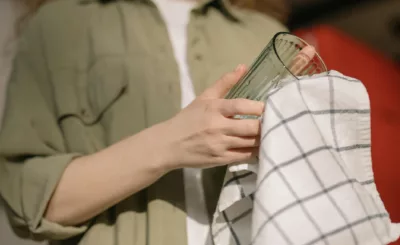Often in Statemachines, duplication can arise. For example, the vending machine in our examples may need periodic repairs. It’s not certain which state the vending machine will be in when the repair man arrives. So all states should have a transition into the Repair Mode state.
Superstates

In this diagram, both the Waiting and Paid states have a transition to the Repair Mode invoked by the repair event. Duplication! We can dry this up by using the Superstate construct. See below:

Here we introduce the Operational superstate. Both the Waiting and Paid states are contained within the superstate which implies that they inherit all of the superstate’s transitions.
That means we only need one transition into the Repair Mode state from the Operational superstate to achieve the same behavior as the solution in diagram 1.
One Statemachine may have multiple superstates. And every superstate may contain other superstates. That is, superstates can be nested.
History State
The solution in diagram 2 has an advantage over diagram 1. In diagram 11, once the repair man is done he triggers the operate event and the vending machine transitions into the Waiting event. This is unfortunate.
Even if the vending machine was in the Paid state before the repair man came along, it will be in the Waiting state after he leaves. Shouldn’t it go back into the Paid state?
Superstates come with the history state which solves this problem. Every superstate will remember which state it is in before the superstate is exited. This memory is stored in a pseudo state called the history state.
Transitions that end in the history state will recall the last active state of the superstate and enter it.
You can see the history state being use in diagram 2. In this solution, the history state allows the vending machine to return from a repair session into the same state it was in before, as though nothing happened at all.
Code
The following code builds the Statemachine in diagram 2. Watch out for the _H. This is how the history state is denoted. If you have a superstate named foo, then it’s history state will be named foo_H.
require 'rubygems'
require 'statemachine'
vending_machine = statemachine.build do
superstate :operational do
trans :waiting, :dollar, :paid
trans :paid, :selection, :waiting
trans :waiting, :selection, :waiting
trans :paid, :dollar, :paid
event :repair, :repair_mode, Proc.new { puts "Entering Repair Mode" }
end
trans :repair_mode, :operate, :operational, Proc.new { puts "Exiting Repair Mode" }
on_entry_of :waiting, Proc.new { puts "Entering Waiting State" }
on_entry_of :paid, Proc.new { puts "Entering Paid State" }
end
vending_machine.repair
vending_machine.operate
vending_machine.dollar
vending_machine.repair
vending_machine.operate
Output:
Entering Repair Mode
Exiting Repair Mode
Entering Waiting State
Entering Paid State
Entering Repair Mode
Exiting Repair Mode
Entering Paid State
Next we should cover pseudo states.





